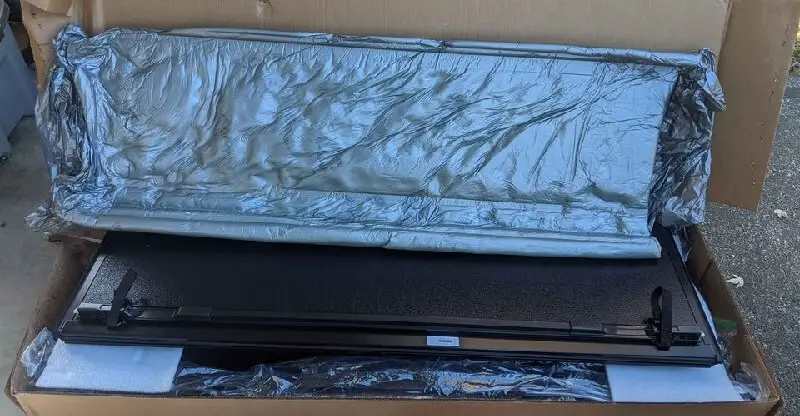Bakflip F1 Installation Instructions


Installing a tonneau cover on a truck is an essential procedure that safeguards the vehicle’s bed and enhances its aesthetic appeal and aerodynamics.
From preparation to final checks, every phase plays a pivotal role in ensuring that the tonneau cover is installed correctly and securely
Preparing & Sealing
Before diving into the installation process, preparing and sealing the truck bed is of paramount importance. This involves thoroughly cleaning the bed to remove any debris or residue hindering sealing.
Subsequently, applying a reliable seal is pivotal to preventing moisture infiltration, ensuring that the cargo remains dry and shielded from potential water damage.
Thus, meticulous preparation is a foundation, ensuring the subsequent steps can proceed without impediment.


Setting Up Side Rails
With a well-sealed bed, attention is shifted to the meticulous setup of side rails. Side rails are pivotal in establishing a frame for the cover, ensuring it’s securely anchored to the truck.
They must be aligned accurately along the sides of the bed, ensuring that they not only provide a sturdy base but also do not interfere with the seamless operation of the cover.
Adequate time and precision during this step ascertain that the cover will smoothly glide or fold, providing easy access to the truck bed when necessary.
Installing the Clips
The subsequent step revolves around installing the clips, a crucial component that secures the side rails and, by extension, the cover to the truck bed. Clips must be strategically positioned and tightly affixed to avoid any play in the rails, thereby ensuring a snug fit of the cover.
Vigilance in ensuring that each clip is sturdily mounted guarantees the steadfastness of the installation, minimizing the risk of the cover coming loose during transit.
Attaching the Cover
With the clips and rails securely in place, attaching the cover becomes the focal point of the installation process. Whether it’s a roll-up, fold, or one-piece model, ensuring that the cover is aligned with the side rails and tightly affixed is critical.
This step ensures that the cover provides optimal protection and operates flawlessly, safeguarding the cargo while maintaining the ease of accessibility to the bed.
Affixing the Bumpers
Subsequently, affixing the bumpers becomes imperative to safeguard both the cover and the truck from potential damage during use. Strategically placed bumpers prevent the cover from making direct contact with the truck, particularly when it is fully opened.
Thereby mitigating the risk of scratches, dents, or other potential damage. This step interweaves protection with practicality, ensuring the longevity of both the cover and the vehicle.
Setting Up Drain Tubes
Ensuring that water does not accumulate on or under the bed cover is accomplished through the strategic setup of drain tubes. These tubes channel water away from the bed, protecting the cargo and preventing potential water damage to the truck.
The effective installation and routing of the drain tubes safeguard against moisture-related issues, thus maintaining the integrity of the cargo space.
Installing Prop Rods
For certain truck bed cover models, installing prop rods is essential for providing access to the bed while the cover is open. Properly installed prop rods ensure stability and safety when the cover is propped open.
Allowing for unhindered access to the bed without completely removing the cover. This step marries convenience with functionality, allowing for easy loading and unloading of cargo.
Final Checks
Finally, a series of final checks are instrumental in validating the installation. This thoroughly examines all components, ensuring they are securely fastened and operate as intended.
Testing the cover’s opening, closing, and locking mechanisms while also checking the efficacy of the sealing and draining systems ensures the installation is successful and durable.
Additional Tips
- Take your time and ensure every step is executed carefully to avoid any misalignment or damage.
- Consider having a second person assist you with placing and adjusting the cover, as this can be much easier with an extra set of hands.
- Keep all tools and parts in a neat, organized space to avoid losing any components during installation.
Bakflip F1 Installation Video
Conclusion
Installing a truck bed cover, while intricate, becomes remarkably straightforward when broken down into these methodical steps.
This summarized guide should provide a straightforward, step-by-step process, ensuring a secure and proper BAKFlip F1 Tonneau Cover installation.
Always prioritize safety and ensure everything is securely fastened to prevent any issues while driving. Consult professional assistance to ensure a safe and durable installation if any step seems unclear or unsure.


Mark Takahashi, Car parts guru with a passion for mechanics. Blogger extraordinaire, translating auto jargon into everyday magic. Drive into his world of knowledge!
